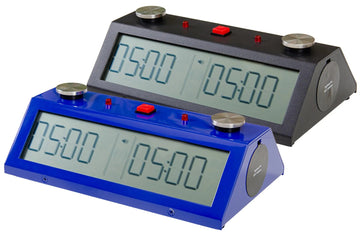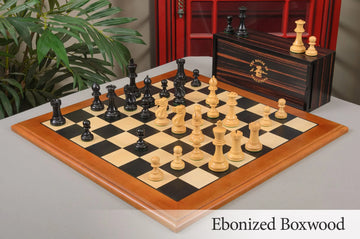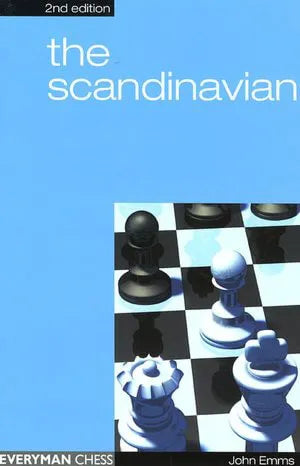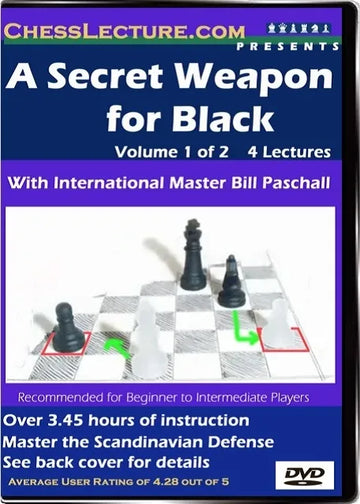Best for Beginners - The Scandinavian Defense Modern Variation
In our list of the 10 Best Openings for Black, we declared the Scandinavian Defense Modern Variation the best choice for beginners. Not only is the opening relatively easy to learn, but it also garners some of the most impressive statistics of any opening for players below 1200 Elo.
But that doesn’t mean the ‘Scandi Modern’ isn’t a sharp choice for intermediate or advanced chess players, too. In fact, it boasts an outstanding track record for Black at all levels and is played frequently by grandmasters like Hikaru and Carlsen.
Curiously, the opening is rarely seen at beginner-intermediate level, meaning you’re very likely to catch your opponent unawares. After reading this guide, you’re going to raring for your next game against 1.e4!

Why is the Scandinavian Modern Variation So Good for Beginner and Intermediate Players?
The first reason that the Scandinavian Modern Variation is so good for beginners is that it immediately puts the game in your hands. By playing this rebellious opening, you thwart White’s usual plans and demand the game is played on your turf.
Better than that – you force White into an opening that few of your opponents will know! Even in intermediate level chess, most players have never properly studied the Scandi Modern. The beauty of it is that, against this opening, intuitive moves fail miserably for White. If you know how to capitalize on these errors, you’ll already be on the inside track.

Lastly, it’s amazing how often the same positions and patterns will repeat themselves in the Scandinavian Modern. White doesn’t have so many options, meaning you don’t have too many variations to learn. Moreover, after playing the opening for a while, you’ll be thoroughly trained in all the most common positions and how to convert them into convincing victories!
White's Three Responses to the Scandinavian Defense Modern Variation
The Scandinavian Defense Modern begins with the moves: 1.e4 d5 2. exd5 Nf6. Now, what will White do?
As we’ve just discussed, White’s most common choices are ill-informed. Here are three of White’s most typical responses (two bad, and one good!)
Option 1: A Misguided Knight: 3.Nc3
In 55% of games against players rated less than 1200 Elo, Black replies with 3.Nc3. This natural-looking, yet weak move is one of the reasons that the Scandinavian Modern is so successful against beginners!
From here, you can usually follow a solid game plan to win you a definite advantage. Begin by swapping off knights on d5 (3...Nxd5 4.Nxd5 Qxd5). Now, whether White continues with 5.Nf3, or 5.d4, your plan will be the same: Develop your queenside pieces, pin White's knight, and castle long!
A typical line looks like this: 1. e4 d5 2. exd5 Nf6 3. Nc3 Nxd5 4. Nxd5 Qxd5 5. d4 Nc6 6. Nf3 Bg4 7. Be2 O-O-O:

Notice how Black is now putting massive pressure on d4 and is threatening to go a pawn up. If you capture White’s defending knight, the pawn is all yours. White’s only way to defend d4 is to play 8.c3, but you can just add more pressure to it with 8...e5.
More frequently, White will simply castle and allow you to win the pawn advantage. Queens may be then be exchanged and you’ll enter the endgame a pawn up. If the queens remain on the board, you have an excellent chance to overwhelm the enemy camp with a pawn storm (see ‘Key Themes and Game Plans’ further down!).
Option 2: White Gets Greedy: 3.c4
The Scandinavian Defense Modern Variation could be considered a gambit. Why? Because White has the chance to defend its pawn advantage with 3.c4. A natural-looking move, this is White’s second most common reply, but again, not a strong one!
The usual way for Black to capitalize is the Scandinavian Gambit: 3...c6. This offers White the chance to cement its pawn advantage at the cost of handing Black speedy development. Mostly, White accepts the gambit, offering Black both knights and its light-squared bishop an express ticket into the game.

With development well ahead of White, your winning tactic is to now go on the attack – and fast! White’s most common next move is 5.Nf3, but this is another mistake! You now have the chance to hound White’s knight with your e-pawn (e7-e5, e5-e4).
The theme of pushing the e-pawn to attack White’s knight is so strong, that 5...e5 is your best move almost irrespective of what White may play. In several lines, you can swap off queens, forcing White’s king to recapture and lose castling rights.
For example: 5. d3 e5 6. Nf3 e4 7. dxe4 Qxd1+ 8. Kxd1 Nxe4 is still excellent for Black.

Also, notice how d4 is the perfect outpost for your knight – White no longer has any pawns to challenge it! Keep playing attacking moves and you might even score a checkmate or crushing material lead early on.
Option 3: White Knows the Right Move! 3.d4
Very occasionally, you’ll come across a player who’s studied the Scandi Modern like you! And they’ll know that the rather counterintuitive 3.d4 is best. Indeed, it wins White a majority – so how to beat it?
A tricky and aggressive line for Black here is the Portuguese Gambit: 3...Bg5. As we saw with the Scandinavian Gambit, Black forgoes a pawn in preference for quick development and a galloping attack!

The most classic line: 4. f3 Bf5 5. c4 e6 6. dxe6 Nc6 7.exf7+ Kxf7 scores Black an outrageous 72% win rate in online games. It could be well worth learning as you begin playing this opening against more advanced opponents!
While the intricacies of the Portuguese Gambit are beyond the scope of this introductory guide, check out this game between Vaibhav Suri and Magnus Carlsen where Carlsen unleashes the gambit in all of its terrible glory!
If White Refuses to Capture d4
Once in a while, you’ll come across a stubborn chess player who refuses to play the Scandinavian Defense the way you expect them to play it. Luckily, none of these are advisable for White!
2.e5
Instead of capturing your queen's pawn, White may opt to push its king’s pawn with 2.e5 – but it isn’t a good move!
Now White’s lonely pawn is a long way from home and vulnerable. Your first job is to cut off possible support with 2...c5. Now White can’t play d4 without incurring a centralized queen and will struggle to hang on to its wayward pawn. White just handed you an immediate advantage!

2.Nc3
The other way that White will sometimes refuse to exchange pawns is by playing 2.Nc3. In this case, push your queen’s pawn: 2...d5 to kick the knight.
If the knight leaps forward (3.Nd5 or 3.Nb5), keep kicking it with your pawns. You win quick development, while your opponent loses several precious tempos while horsing around!

If you’re smart you might even find a way to trap White’s knight! By first removing its escape routes, you might be able to enlighten your opponent of the danger of advancing a knight without prior forethought!
Key Themes and Middle Game Plans of the Scandinavian Modern
In the Scandi Modern, you’ll see the same themes recurring time and again. This is your perfect chance to understand and master some classic middlegame plans!
Castling on Opposite Sides
The Scandinavian Defense often invites Black to move its queen early on, clearing the way for long castling to gain strategic advantages:
Controlling the d-File
Firstly, castling on the queenside immediately posts your rook on the d-file – a critical avenue to control in the Scandinavian Defense! Here, your rook will x-ray your opponent's queen (or king if the queens have been swapped off).
In many lines, your queen will already be occupying the d-file, in which case your rook will beef it up. By creating a rook-queen battery, you’re wielding considerable clout in the center of the board.

Even if it doesn’t present an immediate attack, a rook planted on d1 will almost always pay off later down the line – just try it to see for yourself!
Pawn Storm
Another great reason for castling on the opposite side to your opponent is it allows you to spring a pawn storm upon the enemy camp. This is a classic tactic when castling on opposite sides, yet one that some beginners remain unaware of.
Since your kingside pawns aren’t needed to defend your king, they can be raced up the board to overwhelm your opponent's pawn structure that protects its king. Once the fort has been cracked open, the king can be readily attacked by your other pieces!

The caveat is your opponent can do the same thing! When castling on opposite sides, you’d better be ready for enemy pawns hurtling towards your king too. By skillfully maneuvering your defending pawns, you may be able to evade their attack. Or you may simply be able to strike the enemy camp first!
Swapping Queens, Denying Castling Rights
In other instances, you might be able to prevent your opponent from castling at all! Because the d-file can often slip open completely, there is often the chance to exchange queens and force your opponent's king to move into the d-file as it recaptures.
Once your opponent’s king has moved, it has lost castling rights. He is now stranded in the middle of the board, with no quick way to get him to safety. Your winning strategy now is to attack the king along the d-file with your rooks! Often, your fastest method is simply to castle queenside and land your rook on d8.
Even if White blocks the check with one of its pieces, that piece is now pinned and can be attacked further by other pieces, or even better, by your pawns! By using these simple tactics, it’s amazing how often you’ll be able to score a winning advantage.

Quick Mating Attacks (Tricks and Traps)
Black’s centralized queen in the Scandi Modern presents formidable danger to White. If your opponent isn’t prudent, the queen can quickly swing into mating attacks before they have time to maneuver.
Several lines of the Scandinavian Modern see Black scoring checkmate in the first 15 moves. While we can’t go into all of these – we’ll share a theme that can work in many lines of this opening...
Mating Attack on the h-File
On many occasions in the Scandi Modern, you’ll have a queen posted comfortably on d4 while your bishop on g4 pins White's knight. This may not look immediately dangerous for White, but that can all change very quickly!

In this scenario, Black has just played 6.Nc3. Now Black’s queen will take up its deadly position: 6...Qh5. White, feeling a little boxed in, will now usually kick your bishop with 7.h3. Now, unveil your brilliant sacrifice: 7...Bxh3.
After 8.gxh3 Qxh3, White’s usual response is to try to cover up the denuded king with 9.Nh2 – but it's a dangerous move! Black now follows with 9...h5, preparing for 10...Ng4. Another defensive move now falters for White: 10.Bf3.
Puzzle: Black can now force checkmate in a three to five moves. Can you see how?:

Here are all the moves, in case you need a chess engine to help you!: 1. e4 d5 2. exd5 Nf6 3. Nf3 Bg4 4. Be2 Qxd5 5. O-O Nc6 6. Nc3 Qh5 7. h3 Bxh3 8. gxh3 Qxh3 9. Nh2 h5 10. Bf3
In other lines, you can attack while your queen is still centralized by playing h7-h5. Take any opportunity to open up the h-file! As soon as it’s open, the queen sweeps over to h5, from where it’s very difficult to prevent checkmate!
Scandinavian Defense Modern Variation: Our Verdict
The Scandinavian Defense Modern Variation is a powerful weapon with the Black pieces – especially at beginner level. Because beginners and intermediate opponents are likely to play poor moves early on, an educated player can usually win a significant advantage very quickly!
With similar patterns appearing in game after game, the Scandi Modern also offers you a training ground to practice specific themes and game plans. Soon, you’ll be so polished in these that you’ll know how to turn most positions into convincing wins, game after game.









